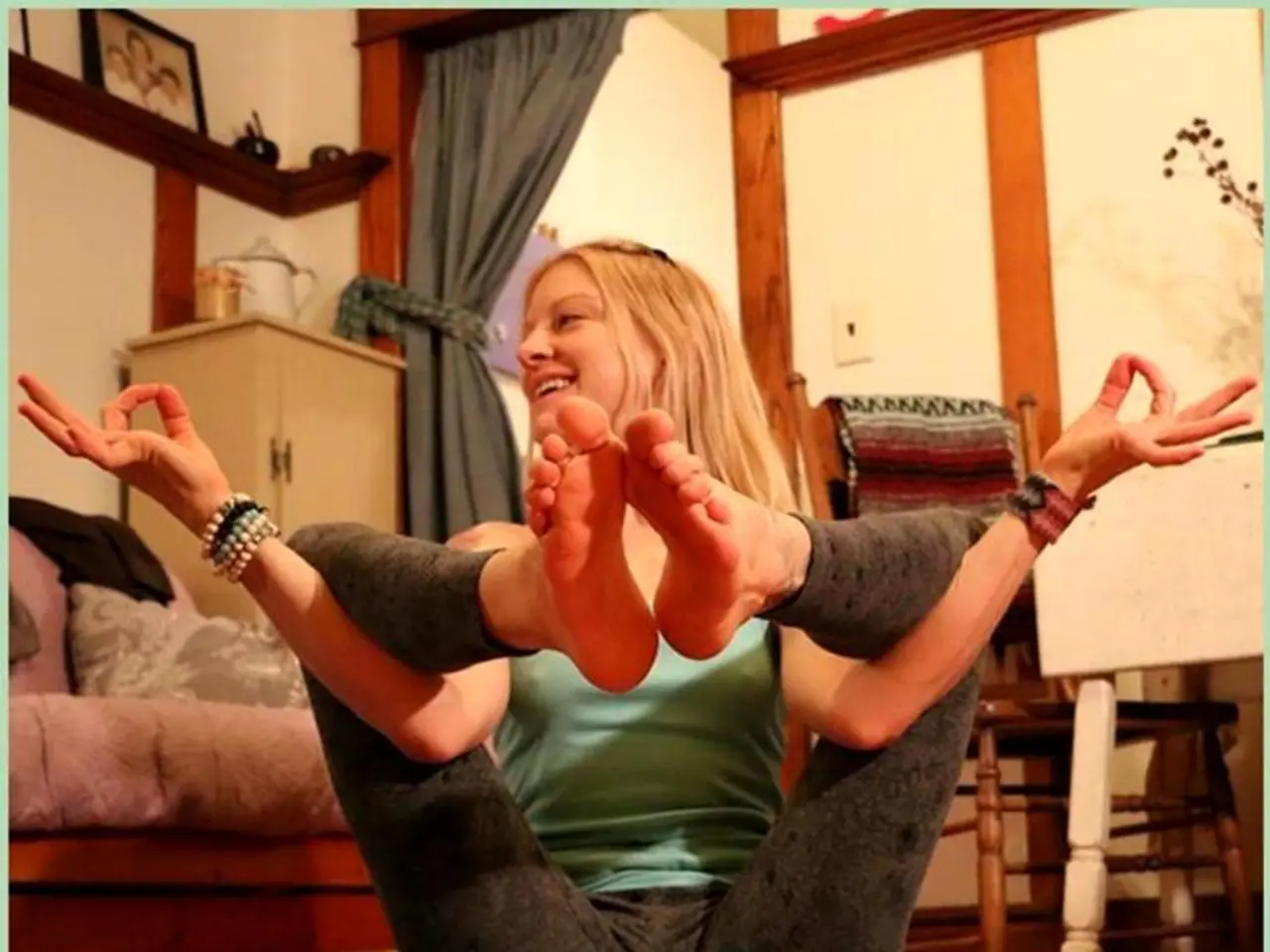Pelvic floor exercises are gaining popularity on TikTok, and here's what you should know for optimal health.
In the realm of pelvic health, renowned physiotherapist Lyndi Rivers advocates a series of exercises to strengthen the pelvic floor muscles. These exercises, when practiced consistently, can significantly improve core stability, enhance sexual function, and support the health of pelvic organs.
One of the top recommendations by Lyndi Rivers is the Pelvic Floor Contractions, more commonly known as Kegels. These exercises strengthen the pelvic floor muscles, improving bladder control, enhancing sexual sensation, and supporting pelvic organs. To perform Kegels, one should typically do 3 sets of 10-15 contractions daily, holding each contraction for about 5-10 seconds.
Another exercise Lyndi Rivers endorses is the Pelvic Tilt, which engages the core and pelvic floor muscles simultaneously, thereby improving core stability and reducing lower back pain. This exercise involves 2-3 sets of 10-15 repetitions, daily or every other day.
The Bridge Pose, also known as the Glute Bridge, is another beneficial exercise. It activates pelvic floor muscles along with glutes and core, supporting organ health and improving posture. This exercise should be done 3 sets of 10-15 repetitions, 3-4 times per week.
The Sunbird exercise, a yoga pose, is another exercise that strengthens the pelvic floor, glute, and transverse abdominal muscles. It is particularly beneficial for those who are pregnant, helping with back pain, increasing pelvic stability, and improving mobility. To perform the Sunbird exercise, one starts on all fours, with wrists under the shoulders and knees under the hips. The main movement involves simultaneously raising the right leg and left arm, and the exercise is performed twice, with 12 reps on each side, and is recommended 3-4 times per week.
The Pelvic Diamond Breathing exercise, as taught by Lyndi Rivers, helps to stretch the pelvic floor muscles, increase blood flow to the pelvic floor muscles, and relieve tension and relax the area. To perform this exercise, one lies down with a bolster under the knees and a blanket under the head, visualizing a diamond shape at the base of the pelvis, and breathes in a specific pattern to stretch and relax the pelvic floor muscles. This exercise is performed for 12-16 counted breath cycles.
For best results, consistent daily or regular practice as recommended is essential, and individualized programs guided by a pelvic health specialist like Lyndi Rivers are encouraged. Lyndi Rivers offers pelvic wellness sessions at Miraval Resort & Spa in Tucson, Ariz, and has online classes available for those seeking guidance from home.
In addition to these exercises, Lyndi Rivers also encourages relaxing the pelvic muscles, as tightness in this area can impact the hips, lower back, and overall balance. She also recommends the Low Lunge exercise, which involves stepping the left foot forward in a lunge position, next to the hands on a block. In this exercise, one holds the position for 30 seconds, focusing on the space between the sit bones and hips. A block is used in this exercise, placed to the right side of the mat. The hips are moved forward and back, and then in a circle, in the Low Lunge exercise for 30 seconds on each side.
In conclusion, strengthening the pelvic floor muscles has been shown to improve core stability and sexual function. By incorporating these exercises into a daily routine, individuals can reap the benefits of a stronger pelvic floor, better core stability, and improved pelvic organ health.
The pelvic floor contractions, commonly known as Kegels, are a science-backed exercise that strengthens pelvic floor muscles and, when practiced correctly, can enhance bladder control, increase sexual sensation, and support pelvic organ health. To further boost core stability and reduce lower back pain, one might consider the Pelvic Tilt exercise, which engages both the core and pelvic floor muscles. For those seeking a yoga-based approach to pelvic floor strengthening, the Sunbird exercise is beneficial, particularly during pregnancy, as it strengthens pelvic floor, glute, and transverse abdominal muscles, improves mobility, and alleviates back pain. To complement these exercises, relaxations like the Pelvic Diamond Breathing exercise can be applied for relieving tension and increasing blood flow to the pelvic floor muscles. Lastly, the Low Lunge exercise helps release tightness in the pelvic area, ultimately improving overall balance.




